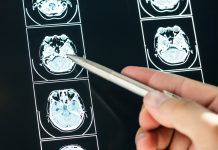
Ischemic stroke is a scary and potentially fatal event.
It happens when a blood clot gets stuck in a blood vessel in the brain, stopping the flow of blood.
This is dangerous because our brain cells need a steady supply of blood to work properly. If the blood supply is cut off, the brain cells can get damaged or die.
Ischemic stroke is one of the main causes of death all over the world.
Nowadays, doctors have special ways to look inside a person’s brain while they are having a stroke. One of these ways is a type of brain scan called Computed Tomography-Perfusion (CT-P).
These scans are helpful because they allow doctors to see exactly where the blood clot is and how much damage it has done to the brain.
The Challenges of Brain Scans
While CT-P scans are very useful, they are also difficult to interpret.
The images of the brain they produce need to be carefully examined to identify the exact area affected by the stroke, which can be challenging. Even for expert doctors, it can be difficult to get it right every time.
To make this easier, scientists have been trying to create computer programs that can automatically find the affected area on the scan.
But until now, none of these programs have been good enough to use in a real hospital setting.
A New Solution
Recently, a team of scientists in Germany has made a big breakthrough. They developed a new computer algorithm that can find the affected area on a CT-P scan better than any other program so far.
They called their new algorithm the Graph Fully-Convolutional Network (GFCN). Unlike other programs, which use more straightforward methods, GFCN uses complex geometric calculations.
This allows it to pick up on the small details in the brain’s structure, making it better at finding the stroke-affected area on the scan.
How Does It Work?
The GFCN works by reducing the size of the brain scan to make it easier to handle. It then pulls out the most important features from the smaller image.
After that, it uses a process called “unpooling” to bring the image back to its original size, keeping all the important details it found.
This unique combination allows the GFCN to find more useful information from the brain scan.
The researchers put GFCN to the test, comparing it with other top-performing algorithms. Even though it uses a simple method and input, GFCN outperformed the other models in most cases.
One version of the GFCN, with three pooling layers and eight times upsampling, scored significantly higher than other models. It was also better at adapting to irregularly shaped areas affected by the stroke.
The Future of Stroke Diagnosis
The results of this study show that using geometric deep learning, like the GFCN, can be very effective for identifying stroke-affected areas in brain scans.
More research is needed, but this could be the start of a new way to diagnose strokes more accurately.
With more accurate diagnoses, doctors could treat strokes more effectively, which could improve patients’ chances of survival and recovery.
If you care about stroke, please read studies about a breakfast linked to better blood vessel health, and olive oil could help lower risks of heart disease and stroke.
For more information about health, please see recent studies about how the Mediterranean diet could protect your brain health, and wild blueberries can benefit your heart and brain.
The study was published in the Journal of Medical Imaging.
Follow us on Twitter for more articles about this topic.
Copyright © 2023 Knowridge Science Report. All rights reserved.



